The Article
VINYL: IT HAS TO EARN THE RIGHT
19th January 2022

You’ve bought yourself a new or even second-hand piece of vinyl. You take it out of the sleeve. You place it carefully on your turntable. Flick a few switches, press a button or two. Sit down. Listen. Right? Not Paul Rigby. You see, Paul Rigby has a ritual
When you switch on your hi-fi. From that point. How long does it take until you’re actually sitting down, listening to your vinyl? Seconds? A couple of minutes? Fifteen, perhaps? More?
Me? Just over three hours. Quite a bit over, actually if I add it all up carefully.
Well, it does. And it doesn’t. Let me explain.
And let me expound too. Because many of you won’t agree or smile at all benevolently at my methods or even my reasoning. Some of you will laugh, shake your head and even advise a quick visit to the local Chemist for a rushed prescription. There will be others who will doubt my sanity. Certain individuals, even those who might agree with what I’m about to say, will declare that life is far, far too short to bother with all of my self-inflicted shenanigans.
The problem is, though, I’m trapped. Trapped by OCD, perhaps? Trapped by my own high standards, maybe? Trapped by being involved in this infuriatingly, pernickety, process-driven, detail-heavy, procedural, systematic hobby of ours? Oh yes. Certainly that.
So what’s all this about three hours then?
When a piece of vinyl first enters into my life, it has to earn its place within my collection. Especially if it wants to stay there.
It can’t just swan in, kick off its shoes, put its feet on the table and airily wave its hand in the air and demand a beer, you know. It has to work for a place on my shelves.
In my world, vinyl has to pass through a ritual akin to joining the Masons. New or old, looked after or not, bought from a record shop or car boot, in the Degritter ultrasonic cleaner it goes.
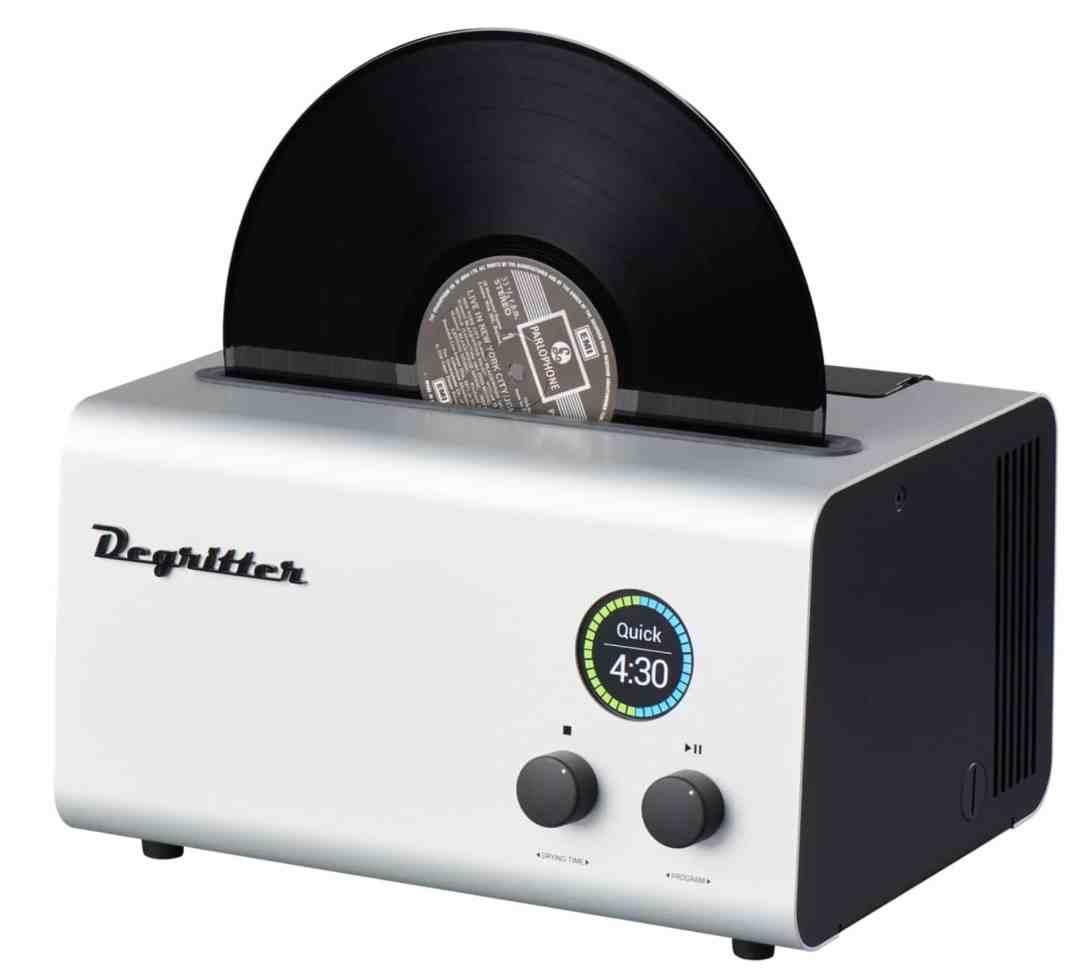
Only an ultrasonic cleaner provides a cleaning action efficient enough to remove muck and grime, that has been stuck and caked onto grooves. More than that, only an ultrasonic cleaner has the attritional ability to actually remove the hardened oils naturally leached from within the actual vinyl during pressing. It’s the attrition that makes the difference. No other vinyl cleaner on the market offers such a balanced level of consistent yet gently persistent attrition as part of its cleaning make up. Ironically, the only other cleaner that comes even vaguely close is the manual cleaner, the cheap and cheerful goat hair brush-bedecked, Disco Antistat.
It’s hardened oils that do more sonic (as opposed to physical) damage than any dust and any grime you might care to mention. Manual cleaners have major trouble with it, RCMs are hopeless.
Ever seen an archaeologist working on a partially exposed piece of pottery? Something on the TV? The popular programme, Time Team, is one common broadcast which loves to offer such close ups. Ever seen them reveal some detail by dusting first? Then they have to tackle the harder soil around it? RCMs – to coin a metaphor – are good at removing the dust. They can’t remove the soil. An ultrasonic cleaner can do both.
One of my ultrasonic cleaning cycles lasts for 15 minutes, on average. Why 15? Because I need to apply a surfactant directly to its surface and then make sure it gets into the grooves. That takes time and effort. Then I need to run the ultrasonic machine for its maximum cycle length. On average? Fifteen minutes.
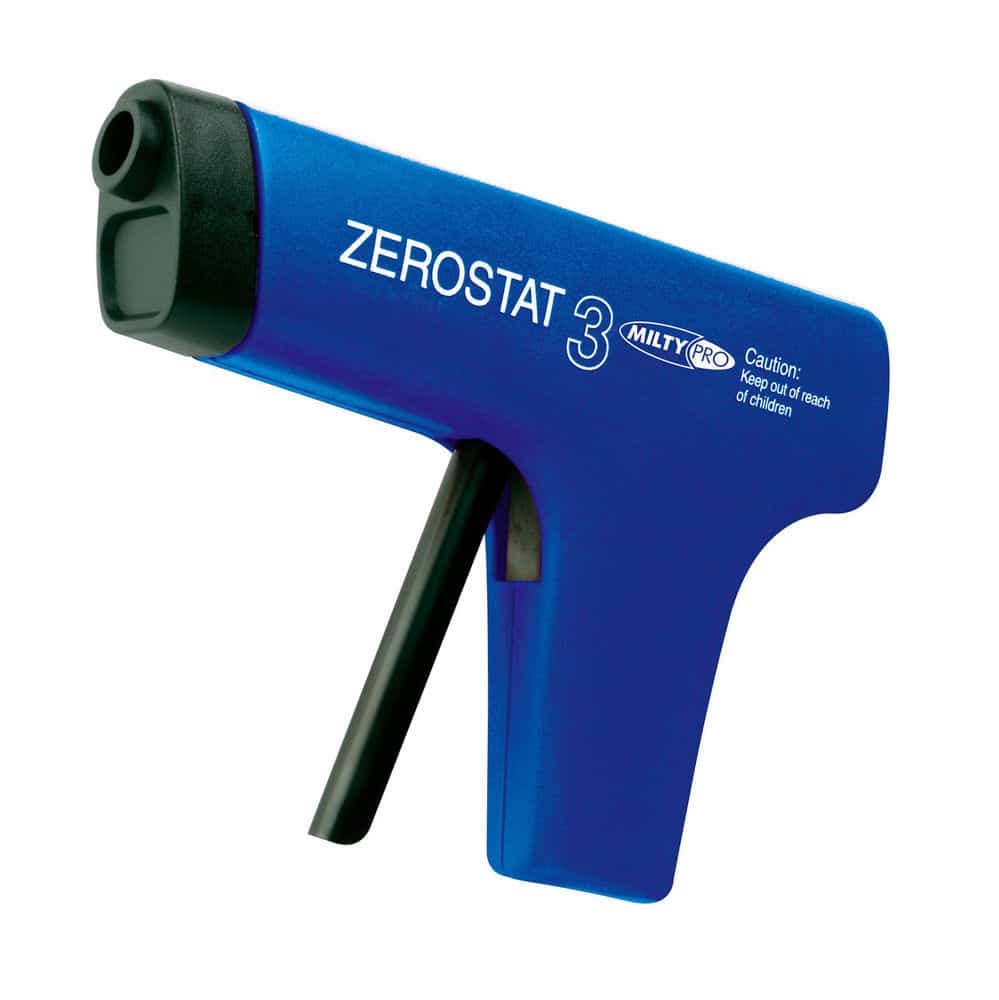
Then I have to repeat. Six cycles in all plus a rinse. That’s over an hour and a half per record. Now that gives my vinyl record a ticket to my collection. It’s a one-off thing. When the intensive clean has been completed, I only need to give my vinyl album a quick ultrasonic clean every what, 10 plays or so? That will take a couple of minutes.
So, as you can see. The three hours (plus) I mention above is hardly consistent to every listening session.
And why do I do the above? Why do I put myself through it? Because it produces sonic improvements. I know, I’ve spent years testing each and every stage of this cleaning regime. As I say, you may disagree. And that’s fine. But that doesn’t help me, ol’son. Thing is, now I know the difference all of the above makes, I can’t go back. If all I did was a quick surface wipe of a velvet brush and then sat in my chair to listen to my vinyl, I wouldn’t be able to take it. I couldn’t relax. I’d fidget and drum my fingers on the chair arm. I would notice every sonic issue, large and small, cropping up every…single…second of the play back. I’d go mad. Because, well, because I know.
So that’s the cleaning.
Then there’s the warming up. Now my hi-fi is beset with valves. My hi-fi has more glass in it than your local pub. So I give everything 45 minutes to warm. That includes my speakers. I normally do this with a CD player because a side of vinyl isn’t long enough. I switch on, then walk away and do other things like make a coffee and let everything stretch and yarn.
Oh and one critical warming-up note? I warm up the cartridge before play too. I let it run for one side of a vinyl LP before settling in to listen. It completely changes the character of the sound for the better.
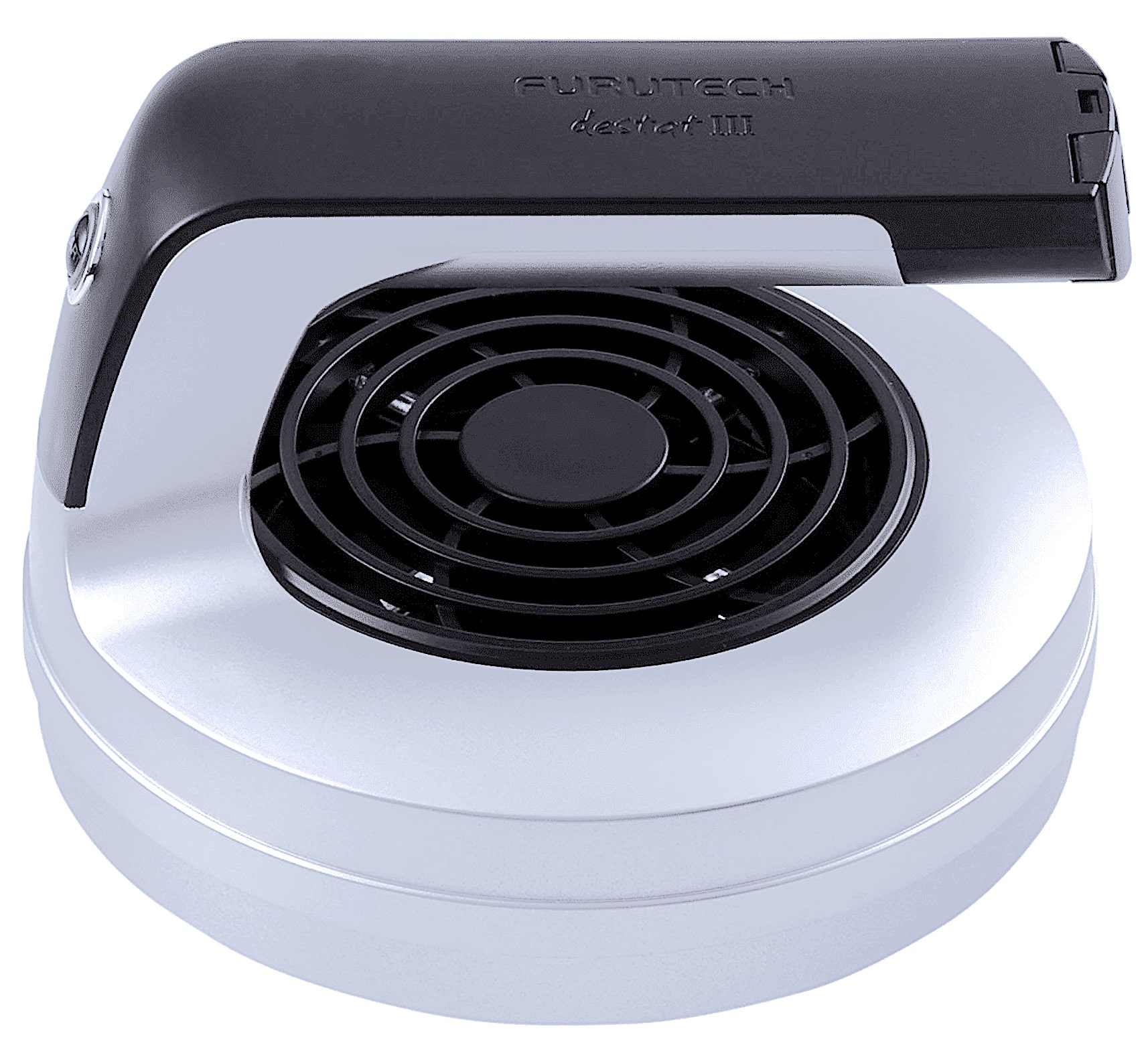
Finished? Oh no. There’s more. I place my vinyl LP on a Furutech Demag. I have the older Mk.I version. I press the Demagnetise button once then I flip the LP and repeat for the other side to lower the noise floor.
I could, if I really wanted to, repeat this cycle half a dozen times because I have heard steady improvements during that time (the improvements reduce during turns four to six but even so). I resist the temptation, though. Even I have my breaking point.
Onto the turntable goes the vinyl. Then I take my Furutech DeStat III to remove static. The Milty Zerostat reduces static. The DeStat III actually removes it. All of it. That improves sound by also lowering the noise floor still further.
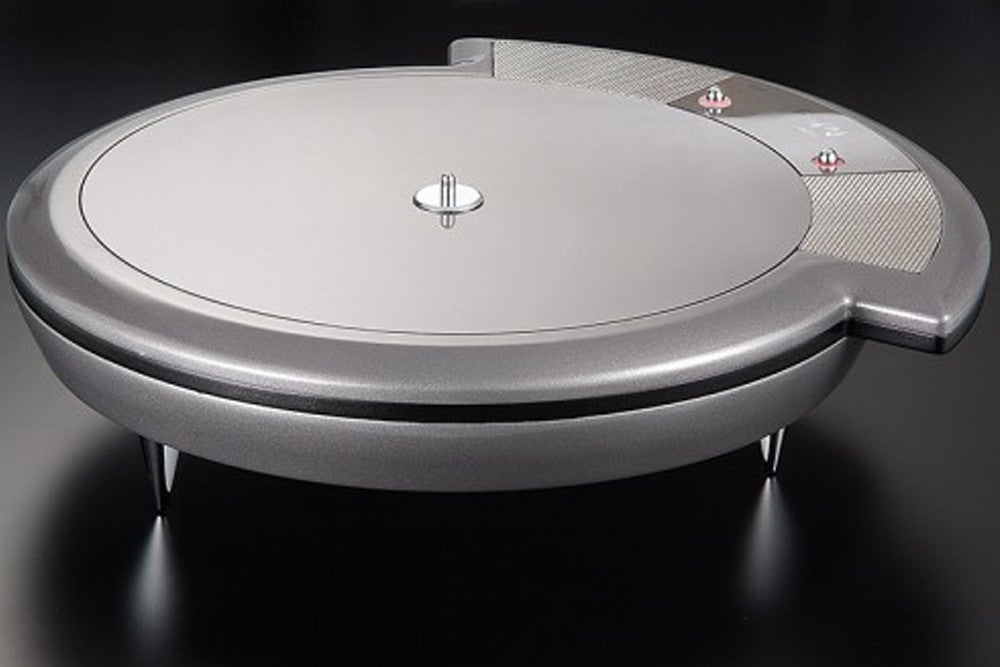
There are static hotspots on a belt-driven turntable: the pulley, outside of the platter where the belt moves and the spindle. Again, I know this because I’ve done the research and have measured the static with an actual static meter.
I give each area a direct blast with the DeStat III. Because I use valves, I also give the output valves on my amplifiers in particular a blast too (output valves are covered with static which raises the noise floor). That means each of my valve monoblocks and my valve phono amp. Another three cycles then.
Now? Well, now I need a shave because my beard has grown by a foot and a half, during all of this time.
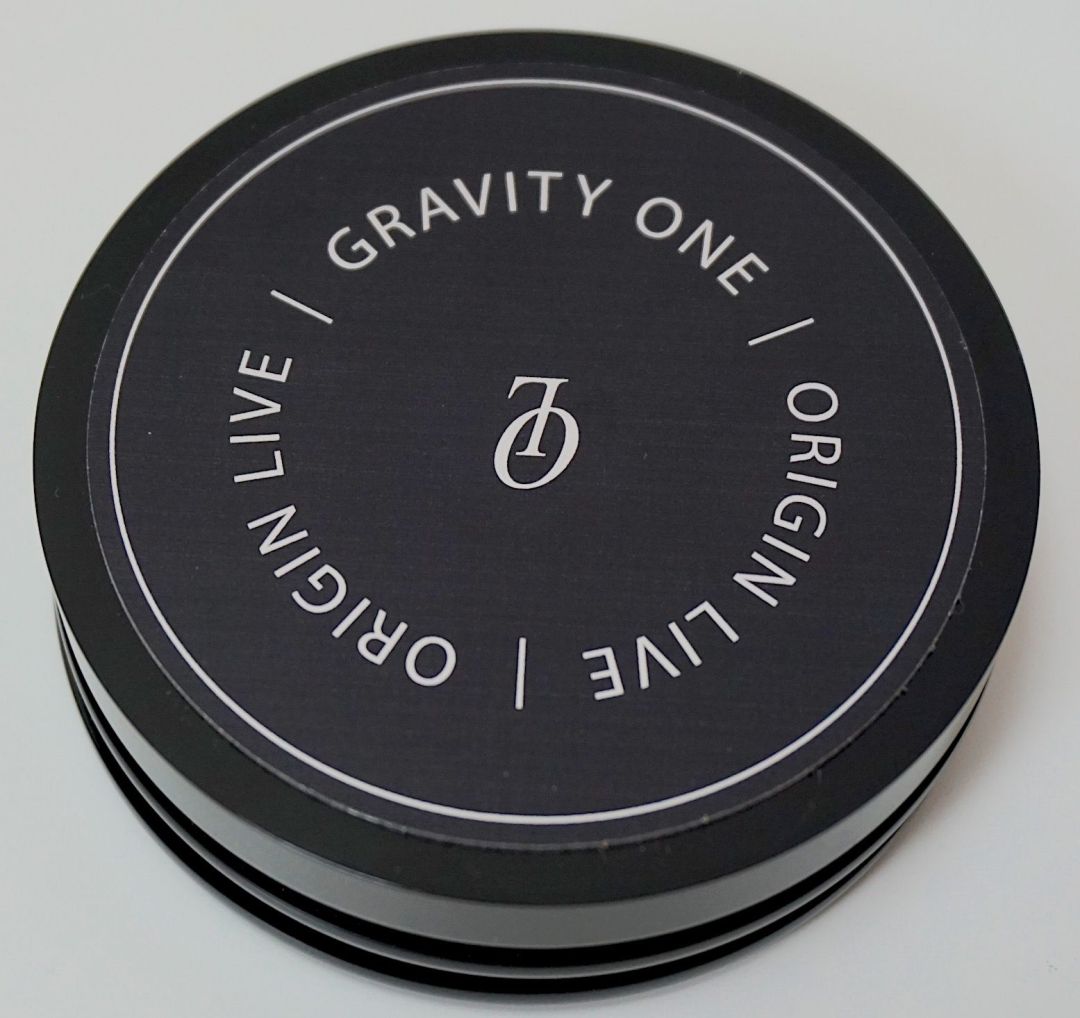
Then I put a noise-lowering Gravity One from Origin Live on the spindle (there to lower noise again: its not a stabiliser or a clamp), check that the stylus is clean, make a new coffee because the old one has gotten cold by now and I’m good to go.
They say a little knowledge can be a dangerous thing. Sometimes a lot of knowledge can be damaging to one’s health.
Crazy? Me? Quite possibly. But look, let me ask you a question. When was hi-fi, as a hobby, ever the pursuit of a sane person?





…..and then, halfway through the first track, the phone rings.
🙂
Fab feature. I,too have a routine…much shorter than yours, but I mix my own cleaning solution using one of your formulas, clean even brand new vinyl now in the disco antistat. Warm up my amp and phonostage for half an hour or so…use a Milty antistat, after a good brush with a carbon fibre cleaner…the sit down with a beverage and enjoy.
Sounds good to me, Gary. Nice one. And thank you.
i use the same amount of time, before the record is played the first.
First i use a backlighted microschope to judge if there is any damage to the record, then how much dirt and grease there is in the rcord, if there is bad damage i trow it out for good, if it is ok in this respect i clean in my automatic RCM cleaner 3 times, inspect again to see if the record is clean now, then the record rests for a few hours to let the vinyl calm down, i do not use agressive cleaning agents, they destroy the soundquality
A microscope, eh? Fascinating stuff. Must look into that…
Yes, truly fascinating, then realising which job the cartrigde/arm/turntable combination actually has to do to play back your favorite records in the best possible way. and you realise how important the setup of VTA/VRA/vibrition control/etc. is, no errors allowed 🙂
In fairness Paul, I’ve starting cleaning new vinyl too, especially since I’ve had my Degritter (mainly due to your excellent review and advice on solution and surfactants) I don’t go to the lengths which you do, I find three or for cycles for even the dirtiest second hand record is enough.
I’m amazed by my own OCD regards playing records, I’m not at all surprised by yours. However it does work, the sound and musicality is vastly better.
Thank Ian – maybe we should start a sort of vinyl version of the AA? A sort of Vinyl Victims Support Group?
I loved this article! You were once again hilarious,,, I am not as ‘smitten’ as yourself, but my regimen is just less of all of that. No tubes right now, unfortunately. I need to see this Disco Anti-stat and especially, the Gravity One. Very intriguing and that’s the next review to be read. I agree on the Destat 3 as well. Kudos to your observations and your your reverence of all thing ‘sane’!
🙂 Thanks Jeffrey.
Yikes.
Vinyl Victims Support Group is exactly what we need lol! Seriously it beggars belief what we have to do to get this imperfect medium to work as intended. A well known reviewer mentioned a long time ago that the vinyl playback medium was the most frustrating of all mediums BUT worth all the hassle entailed. I think I‚Äôll leave it at that except to say that I just cannot listen immediately to a record I‚Äôve just cleaned as otherwise I‚Äôd be sitting on the edge of my seat waiting for the first click. That‚Äôs no way to listen to music! Better to put it aside for another day when I‚Äôve forgotten I‚Äôd cleaned it. By then, unfortunately, I‚Äôll probably forget where I put it ü§£
Brilliantly funny piece as always Paul and scarily true too!
Thanks Dermot – your comments are much appreciated.
Hi Paul, nice article and a nice insight into your ‘System’ – true many would call you a nutter but this is all a personal thing and if it matters to you then it matters.
I don’t listen to Vinyl myself but listen to CD’s and I have my own system of cleaning new CD’s once before I give it a serious listen, I give them an anti static spray before most listening sessions and I let the CD player and headphone amp warm up for an hour if possible (no valves involved but I’m sure it helps) – it keeps me happy anyway…
I’ll think I’ll give the “warming up” a try. For me, at a moments notice I retreat to my music room and quickly put on something I’ve been thinking about hearing all day or trying a new set-up. I just dive right in. Next time I’ll turn it on and THEN grab my coffee first. I have noticed in the past audio equipment is like an athlete. They gotta’ warm up first to perform their best!
Hi Paul!
Thanks for this enlightening inside into your listening routine – as well as your work in general. Quick question slightly off topic considering this very post of yours.
Somewhere in the first part of the article you made a statement about the cleaning device you use, your Degritter, saying that only the Disco Antistat (DA) would come somewhere close to the effectiveness of its cleaning capabilities. Which is kind of fortunate giving the price tag of the DA.
I’ve used a dual Spin Cleaner routine (clean and rinse) over the past couple of years being quite happy with it but lately (specially after some of your articles about vinyl cleaning) somewhat curious about upgrading. I’d be willing to swap the Spin Cleaner for the DA, but knowing me I wouldn’t go for the whole cleaning-solution-directly-onto-the-record-routine, but rather I’d put the surfactant and the alcohol straight into the first bath along with the distilled water. Giving that this appears to be somewhat inferior the the liquid-direct-approach it leaves me with the second problem of having to wait for a whole batch of records to clean as apposed to one single record directly prior to playing it in order to not waste any liquid. Which always bothered me.
So. I’ve spend some time researching traditional vacuum type RCMs. And now the question is, would the fluid-direct-to-disc-approach with let’s say a Pro-Ject VC-S in maybe three cleaning cycles PLUS a rinse with a completely different brush only for the rinse AND second vacuum arm (which would then always be kept clean from any dirt) be close to or maybe even as effective as the DA routine you’ve described in your article about manual record cleaning? Spoken from your experience.
Thanks for your patience with this long one and keep up the great work.
Best regards from Germany.
Hi Michael – if I read you correctly, what you’re describing is basically the conclusion I’m coming to for my Part 2 Cleaning Guide, aimed at RCM/vacuum machine users. That is, if you own a RCM, clean your vinyl in a Disco Antistat (as many times as your own personal madness sees fit), do a rinse in a second Disco Antistat filled with a bath of alcohol and distilled water (ratios, as advised) and then dry with a RCM which will enhance the cleaning because it will remove loose material from the grooves but also provide quick drying.